" data-medium-file="https://recoveryreview433597834.files.wordpress.com/2022/09/pexels-photo-9141232.jpeg?w=300" data-large-file="https://recoveryreview433597834.files.wordpress.com/2022/09/pexels-photo-9141232.jpeg?w=656" src="https://recoveryreview433597834.files.wordpress.com/2022/09/pexels-photo-9141232.jpeg" alt class="wp-image-24864">
For most of my career, I’ve been responsible for managing treatment programs. I believed strongly in those programs. At one of those programs, we developed a continuum of care that provided treatment and substantial, structural recovery support for more than 2 years for people with high severity, high chronicity, and high complexity cases of addiction. We devoted lots of time and energy to monitoring outcomes, patient retention, assuring quality, staff development, and integrating best practices. This program helped people whose lives had been destroyed by addiction become better than well and pursue lives full of connection, service, and personal accomplishments.
Over that time, I’ve been a vocal treatment advocate. That’s how this blog started. However, I’ve needed to be reminded over and over again that a lot of treatment isn’t worthy of that advocacy. Too many treatment programs market hope and recovery but provide care of inadequate quality, duration, and intensity. (Things like cost and credentials are often not good indicators of adequate care.) Some do it for profit, others aren’t knowledgeable or competent, and many are just following the status quo.
As the opioid crisis turned into an overdose crisis (with fentanyl as an accelerant) inadequate care became increasingly dangerous for patients, and it became increasingly important for providers to challenge inadequate and questionable care. It’s also become increasingly important for providers (and advocates) to ruthlessly interrogate their own models of care and be honest about their limitations.
I don’t believe any provider can be all things to all patients, particularly since patients come to treatment with different goals, needs, resources, preferences, etc. However, all providers can be transparent about the pros and cons of their treatment model AND the pros and cons of services/treatments they don’t offer. I’ve become convinced that this is the only path forward for ethical treatment providers — to develop rigorous models of informed consent that are repeated throughout the treatment episode and offer information and active linkage to any reasonable treatment option not offered by that provider. That informed consent is not a one-time event is critical — patients’ goals, preferences, needs, and resources change over time, particularly as they experience successes and setbacks that prompt reflection and re-evaluation of their options. Given the risks, tradeoffs, and individual factors, it’s the responsibility of the treatment provider to make sure the patient is informed and given the opportunity to choose the treatment approach that best aligns with their goals, needs, and preferences.
All of this has been a long introduction to a recently released study that’s been used to advocate for telehealth treatment services.
First, I want to make it clear that I harbor no skepticism about the importance of telehealth services as part of an effective system of care. With the explosion of telehealth during the pandemic, I’ve seen the benefits of telehealth in the engagement and retention of patients who might never try in-person services or stay engaged with in-person services for reasons as varied as transportation, scheduling, temperament, and medical or psychiatric comorbidities.
The study looked at medication retention and medically treated overdoses before and during the pandemic, with the before-pandemic group representing office-based care and the during-pandemic group representing telehealth care. They found good news and bad news
The good news was that shifting to telehealth did not adversely impact either of these outcomes.
The bad news was that I found the outcomes to be very disappointing.
Retention rates for buprenorphine (defined as use over 80% of days) over 6 months were 31% for the office-based group and 33% for the telehealth group.
Retention rates for extended-release naltrexone (defined as use over 80% of days) over 6 months were 8% for the office-based group and 12% for the telehealth group.
18% of each group experienced a medically treated overdose during the study period.
The subjects were all Medicare patients. They had to meet age or disability requirements to enroll. However, the retention rate is no inconsistent with what I’ve seen in other studies with other populations.
I imagine most patients and families are looking for treatments that offer better than a 1 in 5 chance of an overdose, and 2 in 3 chance (or 9 in 10 for extended-release naltrexone) of discontinuing treatment within 6 months.
Are those outcomes explained to patients? Are they offered other options?
This criticism isn’t about the treatment being offered (in this case, medication) or the method of delivery (telehealth or in-person). My criticism is about the system of care that doesn’t offer treatment and recovery support of adequate duration, intensity, quality, and scope. (Which is the norm whether you’re entering residential, outpatient, or office-based MOUD.) And further, it’s representative of an evidence-base that tends to speak only to outcomes like medication retention and overdose.
In his call for recovery-oriented methadone maintenance, Bill White described the difference between remission and recovery:
Recovery from opioid addiction is also more than remission, with remission defined as the sustained cessation or deceleration of opioid and other drug use/problems to a subclinical level—no longer meeting diagnostic criteria for opioid dependence or another substance use disorder. Remission is about the subtraction of pathology; recovery is ultimately about the achievement of global (physical, emotional, relational, spiritual) health, social functioning, and quality of life in the community.
Studies like the one mentioned above don’t even speak to remission.
22 years ago, in response to systems of care that were failing to meet the needs of people with addiction, their families, and their communities, Bill called for a new recovery movement:
The treatment movement that grew out of it focused on creating, professionalizing and legitimizing medically- and psychologically-oriented care of the alcoholic and the addict. While each of these movements can claim successes, the dissipation of the first movement and a backlash against the second has left a vacuum that begs to be filled. It is time for a recovery movement. The central message of this new movement is not that “alcoholism is a disease” or that “treatment works” but rather that permanent recovery from alcohol and other drug-related problems is not only possible but a reality in the lives of hundreds of thousands of individuals and families.
Two decades later, as we confront new system failures, and a new wave of treatments and research that intimate pessimism that full, permanent recovery is possible, it seems like a good time to revisit Bill’s early work on Recovery Management.
As he launched Recovery Management he described 10 areas of vulnerability with the dominant acute care model. A lot has changed, but many problems remain, and some new problems have emerged. Revisiting those 10 areas might be a good place to start to evaluate the current problems and opportunities.
- Attraction
- Access & Engagement Access & Engagement
- Assessment & Assessment & TxPlanning Planning
- Service Elements Service Elements
- Composition of Service Team Composition of Service Team
- Locus of Service Delivery
- Service Dose and Duration Service Dose and Duration
- Frequency of Discharge, Relapse, Readmission
- Failure to Manage Addiction/Tx/Recovery Careers
- Timing of Recovery Stability
References
White, W. (2000). Toward a new recovery advocacy movement.
White, W. (2002). A brief primer on recovery management.

“A proper community, we should remember also, is a commonwealth: a place, a resource, an economy. It answers the needs, practical as well as social and spiritual, of its members – among them the need to need one another.” ― Wendell Berry
One does not have to look very hard to see there is a general malaise in America. We are mired in a time with a myriad of complex challenges in which solutions seem elusive. We are experiencing profoundly difficult economic conditions, war, supply chain disruptions, social isolation, and a level of vitriol toward each other unrivaled at any point in American history since the Civil War. It is moments such as this that offer us the opportunity to rise to our collective challenges and build something anew. We must look beyond despair to restore hope to sustain our society. Drug use to numb pain and addiction have become more prevalent. Our times require narratives of healing to overcome collective despair.
Despair is pervasive in our era. Partially as a result, our life expectancy rates continue to fall, even as other nations began to rebound after the first year of the pandemic. Overall, U.S. life expectancy decreased from 78.85 years in 2019 to 76.98 years in 2020, slipping even further to 76.44 years in 2021—a net loss of 2.41 years as noted in a recent study by the University of Colorado Boulder, the Urban Institute and Virginia Commonwealth University. There is a lot of despair, which seems a central facet in the shortening of our expected lifespans, and the impact can be uneven. Black and Indigenous people are experiencing overdoses at a rate greater than the white community.
As this NPR article describing the work of Princeton economists Anne Case and Angus Deaton, examining why US life expectancies were falling notes, “Americans are drinking themselves to death, or poisoning themselves with drugs, or shooting or hanging themselves” at unprecedented rates starting around the year 2000. The evidence suggest that these trends are getting worse. What we are doing is not working. What we have not done involves investing in community.
The conceptualization of these fatalities as deaths of despair was an important step. It allowed us to understand the antecedent factors leading to these tragic losses. Such a narrative is important to help us consider what we are facing. However, to move to solution we need to develop narratives that place our communities on pathways of hope and healing. We cannot stay stuck in the problem. We have a systemic challenge, and we need to conceptualize how to reverse these deaths of despair on a society wide level by restoring community by developing narratives of healing in our communities. We must develop a solution narrative to overcome a problem narrative.
The opposite of despair is hope, a commodity in short supply for too many Americans. We must restore hope on the collective level to save lives and heal communities. If we want to restore hope in large scale ways, we must nurture such communities and help them grow. We need to focus resources on the communities impacted to the greatest degree, which means investing in black and indigenous communities as a priority. As addiction is a central factor in deaths of despair, solutions must center on recovery.
Recovery narratives are stories of post-traumatic growth (PTG). PTG is a form of positive change that people experience as a result of struggling with major life crises or a traumatic event. PTG can be considered an outcome as well as a process. It is about maintaining a sense of hope that not only can a person who has experienced trauma survive but they can also experience positive life changes as a result. Addiction has facets of trauma imbedded in it. Often, but not always, addiction rises out of traumatic life experiences, and even when its roots are more firmly from other causation, like genetics and heavy use, life in addiction invariably involves significant trauma either antecedent or subsequent substance use initiation. Addiction can be seen as a communicable condition, but so can recovery.
Recovery stories are most often seen in the context of personal narratives, and they are highly individualized, no two people have identical recovery pathways. Restoring hope at the point of deepest despair is a common theme of addiction recovery narratives. Thousands of people experience the restoration of hope every day across the United States. But these are not just individual narratives. They are also shared narratives. Hope is often restored in small groups of people who support each other’s process. They work to regain their lives and provide service to each other in support of their common goal, recovery. They establish islands of healing. We need these islands in all communities.
Post traumatic growth occurs on the level of community. All addiction mutual support process can be viewed in the context of communal post traumatic growth and recovery. Communities’ recovery together from a variety of traumas beyond addiction. Natural disasters, mass shootings and economic collapse are several that come to mind. Often, communities develop stories of how they came together to heal and build anew. Narratives that help people conceptualize common cause and rise up together through the devastation and redefine themselves. They form new islands of mutual support.
An example of a shared narrative of healing occurred through the New Recovery Advocacy Movement (NRAM). NRAM occurred at a time many of us saw as a crisis time, and they came together to change it. Groups of dedicated people with few resources came together and changed a lot of what we do and think about addiction, they started focusing on the healing and not just the pathology. They shifted the narrative to recovery. They began to share their stories of healing and developed community-based strategies of healing. Investment by SAMHSA was fundamental to what happened. Several people at SAMHSA, including Dr H. Westley Clark and Cathy Nugent understood that communities can heal themselves and with even modest resources could build things sustainable over the long term through the Recovery Community Support Program (RCSP). They had the insight that communities that are resourced to heal form a process collective traumatic growth. Islands of hope, connection, and purpose. Communities that can help heal other challenges beyond addiction and bring us together as a nation.
In looking for articles on how to systemically address deaths of despair, little has been written on solution narratives. Five years ago, Bill White in his piece The Role of Recovery Communities in Cultural Healing posed the question: “Is it possible that people in addiction recovery and diverse communities of recovery could serve as a force for cultural and cross-cultural healing?” It seems to me to be the question of our times and the narrative we build to do so is crucial.
What we may want to think to change the direction we are heading:
- How do we conceptualize and articulate community wide solutions to address deaths of despair?
- What can we do as a society to fuel efforts to strengthen resiliency in all of our communities?
- Where are our narratives of hope to bring people together to reverse these deaths in diverse communities across America?
- How can we form recovery narratives of hope that we can share with each other so that communities can start to heal themselves?
One of the reasons we may have difficulty developing a collective hope narrative is that we approach solutions primarily with a service focus, rather than a community building focus. I suspect having interviewed and worked directly with several the initial RCSP grant holders that community building was a core feature of the success of these projects. They brought people together. They saw the community as the healing agent, not an isolated set of services, but hives of hope and connection emphasizing restoration of community. The grants were shifted from a support focus to a service focus in early stages of the grant project and so we did not fully yield what this initial focus could have realized. Support focuses on drawing community together; service delivery is oriented in traditional treatment infrastructure where units of care are delivered at the individual or group level with all of its inherent limitations. The likely risk of founding a new idea in an old model is the replication of the old model that was unable to deliver critically needed new growth.
We have identified the problems; the critical next step is conceptualizing and articulating solutions. Humans are motivated to change when there are stories that they can identify with and strive towards. History is replete with examples of overcoming immense problems occurring when how we thought of those things shifted to seeing new opportunities and developing new narratives. We need a collective recovery story in America right now. We can start with elevating the stories of islands of healing that are rising out of the sea of despair. We can start by recognizing that recovery communities are vital to overcoming other challenges we have here in the United States. We can start by rethinking solutions that are oriented in community rather than as a traditionally delivered unit of care.
We can develop narratives of community healing across this great nation.
This op-ed was originally published by The Hill on September 12, 2022
Natalie struggled with a methamphetamine use disorder for more than 9 years.
She was one of the fortunate few to receive treatment to address her addiction, yet that help felt incomplete. Like many people trying to heal from substance use disorders, she eventually began taking meth again.
Eventually, Natalie was diagnosed with attention-deficit/hyperactivity disorder (ADHD), one of the most common mental disorders in youth. She started ADHD treatment in addition to treatment for her meth addiction, and it made her long-term recovery a reality.
“The addition of Adderall really changed my life,” she said. “Looking back, it makes sense that I was self-medicating ADHD that was undiagnosed. I found it very discouraging that a lot of people got their lives in order while I struggled to function with everyday tasks. In part, that is what led to my relapse.”
Recovering from drug addiction is notoriously difficult. Setbacks are common. Too often, a critical element is overlooked: co-occurring mental health conditions. Treating mental illnesses like depression, anxiety, post-traumatic stress disorder, ADHD, and others with medications or other therapies is crucial to address the addiction and overdose crisis that now claims over 100,000 lives annually.
Substance use disorders often accompany other mental illnesses. Individuals who experience a substance use disorder (SUD) during their lives may also experience another co-occurring mental disorder and vice versa.
For many people, drug and alcohol problems begin as self-medication: using substances to cope with temporary stress or to manage symptoms of chronic mental health problems they may not even know they have. Substance use, particularly alcohol, can be a socially accepted way of dealing with negative emotions.
Surveys show alcohol use rose during the COVID-19 pandemic, including increased use by stressed parents. Research has also tied problem alcohol use in college students to self-treatment of social anxiety. Similarly, people with untreated depression might discover that opioids or stimulants temporarily boost their mood and use them for that purpose.
Fragmented and hard-to-access mental health care means that these conditions and addiction often go untreated. In some communities, it is easier to get illicit drugs than adequate medical mental health care, making co-occurring addiction and other mental illness more likely.
But using substances to treat mental illness can begin a difficult cycle. Substance use to manage mental illness can lead to addiction and can in turn worsen the original mental illness. Regularly taking drugs or alcohol causes the brain to adapt to that substance—known as dependence. Effectively, the brain dials down its own neurotransmitter systems upon which the drugs act. A person trying to relieve anxiety through substance use will feel worse anxiety most of the time, because their brain now depends on the drug for relief.
Racism and other forms of discrimination, isolation, childhood trauma, poverty and lack of access to education and healthcare can all play a role in increasing risk of developing mental illness and substance use disorders. The stigma that attaches to both substance use disorders and mental illness exacerbates these factors—making the person with mental illness and addiction even more isolated and vulnerable, and less likely to seek treatment.
The entanglement of mental illness and substance use disorders requires urgent action. Efforts to reverse the addiction and overdose crisis need to be multifaceted, taking mental illness into account. We have powerful, proven treatment tools for addiction, especially for opioid use disorder. Harm reduction strategies, when implemented, can staunch overdose deaths. But expanded screening and care for mental illnesses including depression, anxiety, PTSD, and others must be a component to successfully address the current addiction and overdose crises.
Prevention is possible if investments are made. Opportunities to reduce risk can begin early in life, since substance use disorders and other mental illnesses share common risk and protective factors. Interventions starting during the prenatal period and followed through adolescence and young adulthood can help avert a range of adverse outcomes later in life. Moreover, numerous studies of prevention’s return on investment show that communities could not only save lives but also money by investing in prevention programs.
Screening is equally important. Earlier this year, the U.S. Preventive Services Task Force recommended that primary care physicians screen all adult and adolescent patients for depression, given its low cost and potential for benefit. Screening for mental health conditions needs to become part of standard practice along with screening for substance use and substance use disorders to personalize interventions to treat patients’ unique needs and increase the likelihood of recovery.
Image

This week, NIDA released our strategic plan for FY 2022-2026. Strategic planning is a process all NIH Institutes perform every five years, to take stock of the current state of research and set priorities that are ambitious but achievable to advance an Institute’s particular mission.
Drug addiction and overdose deaths are among the most pressing health crises of our times. NIDA’s new plan reflects our commitment to advancing all aspects of addiction science in the service of improving public health. It corrals the breadth of research we support—from basic neuroscience and pharmacology to epidemiology and prevention to therapeutics development and implementation, to research on the delivery of addiction treatment and other services—while remaining flexible and responsive to scientific innovations as well as to the rapidly shifting drug use and addiction landscape. Our plan for the next five years also prioritizes research that is informed by people with lived experience of addiction in themselves or their families, to best meet the needs of those most directly impacted by our science.
NIDA’s 2022-2026 Strategic Plan has five priority scientific areas:
- Understand Drugs, the Brain, and Behavior
- Develop and Test Novel Prevention, Treatment, Harm Reduction, and Recovery Support Strategies
- Accelerate Research on the Intersection of Substance Use, HIV, and Related Comorbidities
- Improve the Implementation of Evidence-Based Strategies in Real-World Settings
- Translate Research into Innovative Health Applications
Within each Priority Scientific Area, goals reflect targeted areas of emphasis to speed progress toward achieving our mission, as well as key focus areas that reflect specific research opportunities and other initiatives NIDA will undertake. Additionally, the plan describes seven cross-cutting themes that apply across the five priority areas:
The new strategic plan, which was developed with input from NIDA’s advisory council and the public, helps ensure that NIDA will continue to advance all domains of addiction science and disseminate new knowledge in ways that are measurable and that will have the greatest impact on people’s lives. The rapidly shifting drug landscape and the devastation of the drug overdose epidemic have enhanced public interest and drawn greater investment in our science, and it is our responsibility to help direct that investment in the most effective, equitable, and wise manner to prevent and treat drug addiction and its consequences.
NIDA’s FY 2022-2026 Strategic Plan is a living document and a vital roadmap for our Institute and our field, and I thank all the NIDA staff and leadership who contributed to crafting it.
Read the 2022-2026 NIDA Strategic Plan, or read the Executive Summary.
Guest blog by Stefan Neff, Regional Coordinator British Columbia, Canada

As the regional coordinator for SMART in British Columbia, Canada, my mission is to help as many individuals seeking self-empowerment and evidence-based tools as a process to help themselves. When I became the coordinator a few years back, I ventured out as a newbie, eyes wide open, finding as many resources as I could to help grow SMART Recovery in the community that I love so much.
In September 2019, I found out about the Recovery Day BC event and I wandered myself down to see what the fuss was all about. Well, there were people lining the street all celebrating their own recovery, live music playing, and kids playing and laughing in the KIDS ZONE. At that moment I said to myself, I would love to have a SMART booth proudly displayed for all to see. A few years went by and COVID happened; a lot had changed in British Columbia. We lost many in-person meetings, some facilitators retired, and many of the determined facilitators dove into the online Zoom platform.
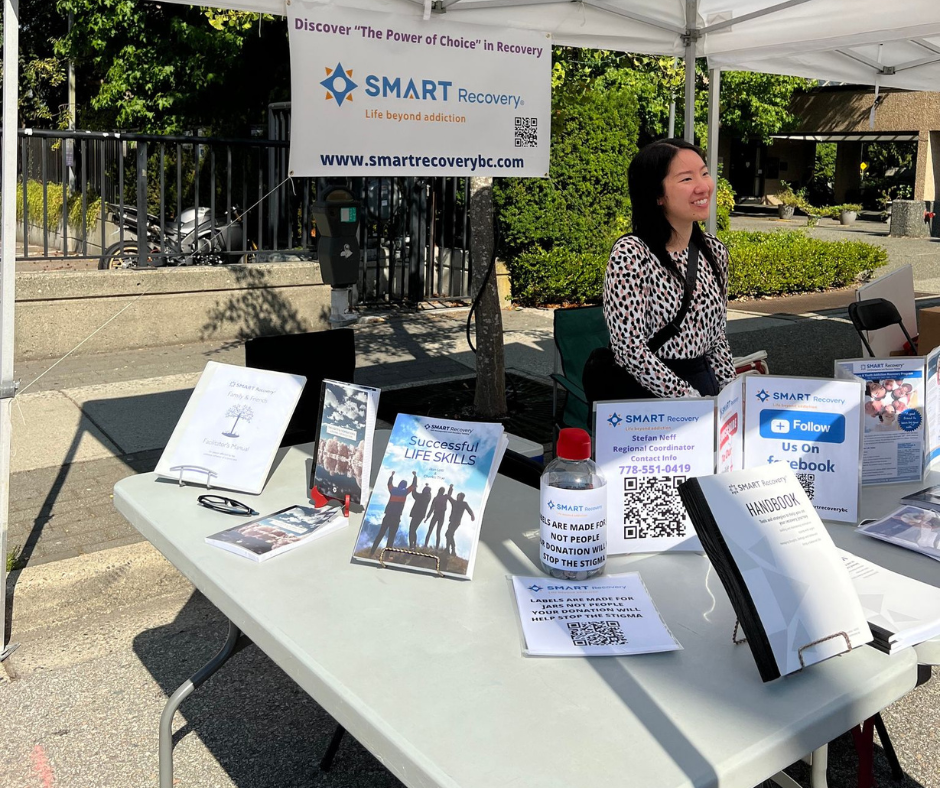
Now, 2022 is here and many things have levelled out. Meetings are going back to in-person, but this feeling never went away to have a booth at this massive event in September. What happened next was super special. I got an email from SMART Toronto Canada that the event organizer wants SMART to be a part of the 10th-anniversary Recovery Day BC event, with over 25,000 people expected to attend. Wow! What an opportunity to have a booth with a SMART banner showcasing what SMART is all about and how the program works.
I went into overdrive, searching for volunteers to help man the booth and what supplies I needed on a tiny budget. To tell you the truth, it was a little overwhelming, designing and ordering the banner, renting a popup tent, and asking volunteers to help find tables and chairs. The biggest joy was when SMART Recovery offered two training combos as raffle giveaways. I am so grateful to have two amazing volunteers who really stepped-up. One helped deliver all the heavy stuff and Bernice Lee, who is the SMART volunteer coordinator for Vancouver Coastal Health Authority, helped cover the booth.
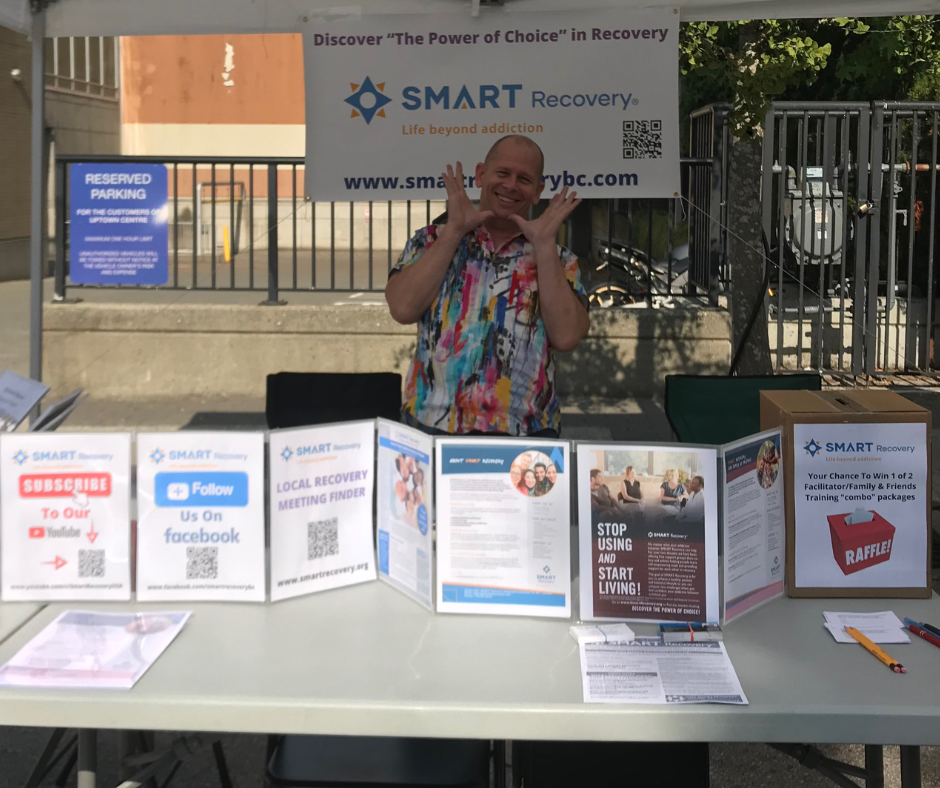
Now here’s the fun and extremely heartfelt aspect of this Recovery Day BC event – people who attend the SMART meetings came up to the booth with big SMILES on their faces, hugs and hi-fives, saying how SMART saved their lives and how amazing the program is. Some participants from the three online meetings I host gave me huge hugs, their spouses thanking me for helping their loved one towards recovery. My mind was racing with so many emotions, tears of joy flowing down my face, it was very emotional for me. It gets even better, meeting treatment centers, other non-profits wanting to work with SMART or already running meetings in their facility, you name it wow, what a great opportunity to speak with so many people who want to help others help themselves.
I will be back bigger and better next year. The planning starts now!
Watch Stefan in his Facilitator Spotlight video.
PLEASE NOTE BEFORE YOU COMMENT:
SMART Recovery welcomes comments on our blog posts—we enjoy hearing from you! In the interest of maintaining a respectful and safe community atmosphere, we ask that you adhere to the following guidelines when making or responding to others’ comments, regardless of your point of view. Thank you.
- Be kind in tone and intent.
- Be respectful in how you respond to opinions that are different than your own.
- Be brief and limit your comment to a maximum of 500 words.
- Be careful not to mention specific drug names.
- Be succinct in your descriptions, graphic details are not necessary.
- Be focused on the content of the blog post itself.
If you are interested in addiction recovery support, we encourage you to visit the SMART Recovery website.
IMPORTANT NOTE:
If you or someone you love is in great distress and considering self-harm, please call 911 for immediate help, or reach out to 988 Suicide & Crisis Lifeline @ 988, https://988lifeline.org/
We look forward to you joining the conversation!
*SMART Recovery reserves the right to not publish comments we consider outside our guidelines.*
Subscribe To Our Blog
Join our mailing list to receive the latest news and updates from the SMART Recovery Blog.
You have Successfully Subscribed!
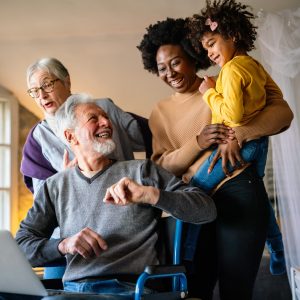 We all have family that we can turn to in times of need. We look to our family for support and love during our toughest moments. In the case of recovery, families may not know everything about the disease of addiction. As a family member of someone in recovery, you might struggle to communicate with your loved one or understand where they’re coming from. This is completely normal – it’s hard to put yourself in the shoes of someone in recovery. However, there are many steps you can take to make sure you are being the best support system possible for your loved one.
We all have family that we can turn to in times of need. We look to our family for support and love during our toughest moments. In the case of recovery, families may not know everything about the disease of addiction. As a family member of someone in recovery, you might struggle to communicate with your loved one or understand where they’re coming from. This is completely normal – it’s hard to put yourself in the shoes of someone in recovery. However, there are many steps you can take to make sure you are being the best support system possible for your loved one.
Substance use adds stress and strain to any family dynamic – and understanding that you, as a family member, play a key role in your loved one’s recovery, is a big step in healing wounds and friction caused by addiction. After all, addiction is known as a “family disease” – it does not simply affect the addict, but the close family members around them as well.
What role do family members play in recovery?
When someone is in active addiction, the support of close family and friends around them is crucial to the success of their recovery. As a family member, you can play multiple roles throughout the entire process of recovery, from beginning to end:
- Accountability: Telling your loved one the truth, straight from a source they know, love, and trust. Holding your loved one accountable, rather than simply brushing off their mistakes, reinforces that they need to change.
- Helping during treatment: Your loved one’s success in recovery is severely hindered if you are not willing to help them get through the process of treatment. Be the supporter that accompanies them to treatment facilities, talks with them on the phone, and visits them to encourage them to keep going.
- Participating in the family program: Ensure that you are being the best possible supporter to your loved one. The family program will guide you through the addict’s way of thinking, allowing you to see things from their point of view. You’ll learn how to set important boundaries, and you’ll be able to begin the healing process. When your loved one returns home from treatment, you’ll be all set to communicate with them in a healthier, more productive way.
- Acknowledging your own needs: When your loved one is in active addiction, it’s easy to get wrapped up in their life and, accordingly, blame yourself for anything that goes wrong. However, you need to keep your own mental health in check, because your loved one requires your full support and love – which isn’t possible if you’re mentally struggling. Take time out to practice self-care, attend individual therapy, or anything else that can help keep you in a healthy mindset.
Remember — other family members to your loved one are struggling as well, so it’s important to let them know the number of ways they can help both your loved one and themselves. Through willingness to help and determination to see your loved one succeed, you can all go forward as a family, knowing that you are doing everything in your power to be their best support system.
About Fellowship Hall
Fellowship Hall is a 99-bed, private, not-for-profit alcohol and drug treatment center located on 120 tranquil acres in Greensboro, N.C. We provide treatment and evidence-based programs built upon the Twelve-Step model of recovery. We have been accredited by The Joint Commission since 1974 as a specialty hospital and are a member of the National Association of Addiction Treatment Providers. We are committed to providing exceptional, compassionate care to every individual we serve.
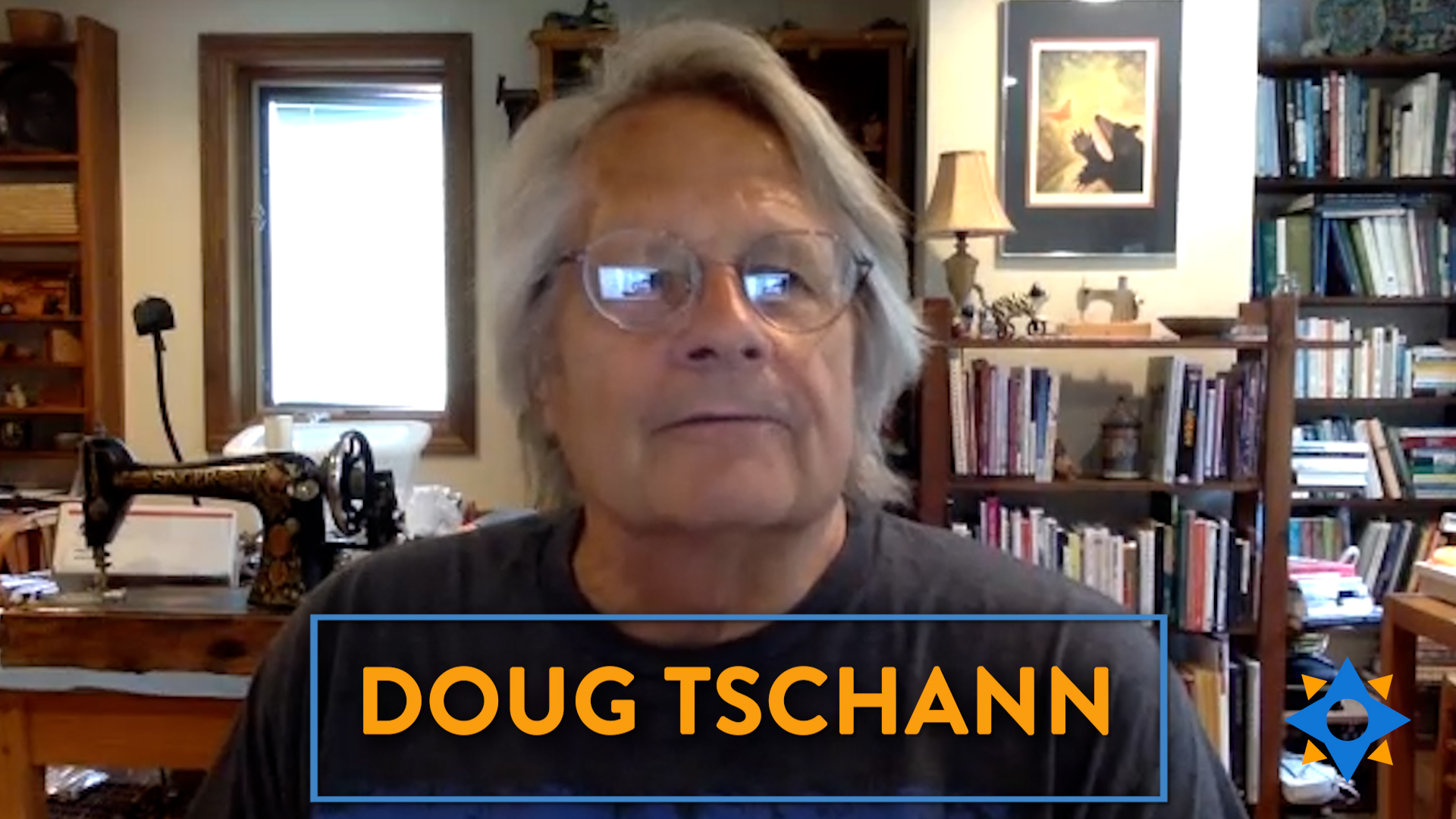
Doug Tschann realized he needed a recovery program that focused on the nuts and bolts of addiction. He found this in SMART. Today the retired schoolteacher is a facilitator in Mankto, Minnesota. He finds it rewarding and it makes him happy knowing he’s helping others on their recovery journey.
Find Doug’s online SMART meeting #4697
Learn more about becoming a volunteer
Subscribe to the SMART Recovery YouTube Channel
Video storytelling is a powerful tool in recovery, and we are proud to share our SMART Recovery content free-of-charge, available anywhere, on any device. Our videos hope to inform, entertain, and inspire anyone in the recovery community.
Subscribe to our YouTube channel and be notified every time we release a new video.
PLEASE NOTE BEFORE YOU COMMENT:
SMART Recovery welcomes comments on our blog posts—we enjoy hearing from you! In the interest of maintaining a respectful and safe community atmosphere, we ask that you adhere to the following guidelines when making or responding to others’ comments, regardless of your point of view. Thank you.
- Be kind in tone and intent.
- Be respectful in how you respond to opinions that are different than your own.
- Be brief and limit your comment to a maximum of 500 words.
- Be careful not to mention specific drug names.
- Be succinct in your descriptions, graphic details are not necessary.
- Be focused on the content of the blog post itself.
If you are interested in addiction recovery support, we encourage you to visit the SMART Recovery website.
IMPORTANT NOTE:
If you or someone you love is in great distress and considering self-harm, please call 911 for immediate help, or reach out to 988 Suicide & Crisis Lifeline @ 988, https://988lifeline.org/
We look forward to you joining the conversation!
*SMART Recovery reserves the right to not publish comments we consider outside our guidelines.*
Subscribe To Our Blog
Join our mailing list to receive the latest news and updates from the SMART Recovery Blog.
You have Successfully Subscribed!
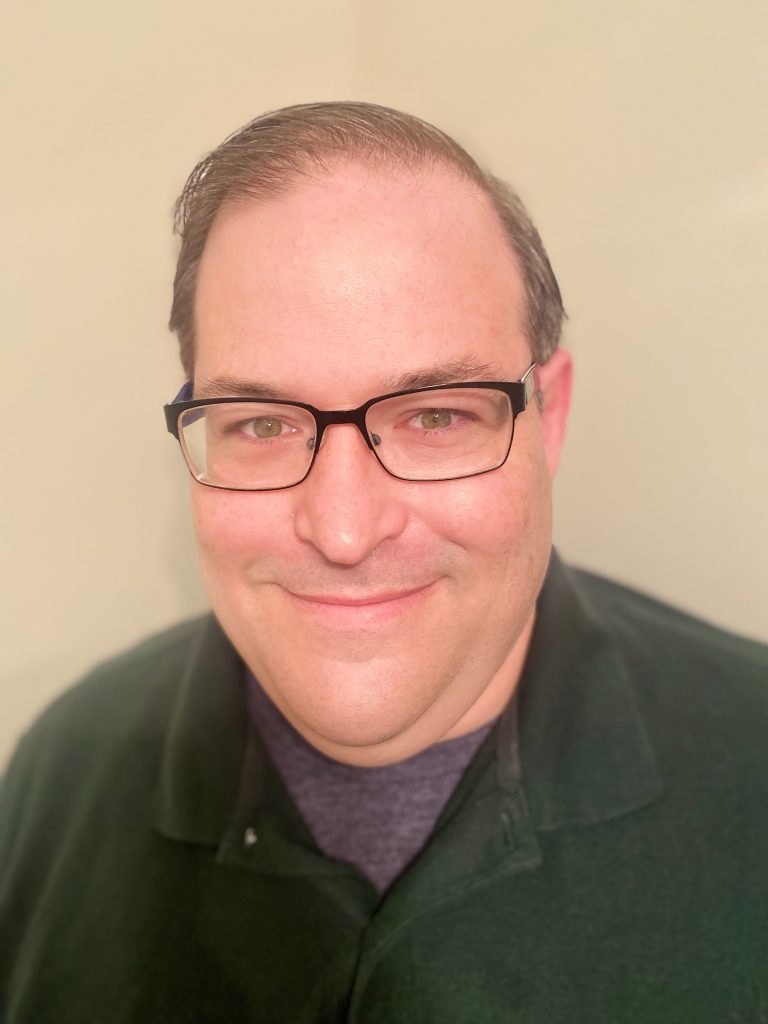
For Brad Glaser, SMART’s Project Coordinator for Fletcher Group Grants, coming to work for SMART seems like a kind of natural progression, “I have been a participant in SMART Recovery going back nine years and became a facilitator in 2019. When this position with SMART became available, I was so excited to come to work for an organization that has meant so much to my life.”
Brad now focuses on bringing SMART Recovery, specifically the Successful Life Skills curriculum, to recovery homes nationwide. He gets to witness firsthand the positive impact the program has on their residents. This is especially important when you consider the participants are at a transitional time in the recovery process, “When you see a concept truly click into place for someone or hear a resident recount how they used a SMART tool in their own life, it is affirming and inspiring.”
A background in sales and marketing provided Brad with a lot of experience dealing with people of all kinds, “My experience with clients has been a huge help in working with the recovery homes both in the recruitment and implementation process.” More recently, Brad’s work in peer support has deepened his understanding varied recovery experiences.
Here are Brad’s responses to the Take 5 Spotlight questions:
- Are there tasks you perform regularly during your workday? It varies, everything from recruiting homes to scheduling to troubleshooting technology. I also facilitate the classes for a couple of homes, officially to have a hands-on feel for the initiative, but mostly because I love facilitating SMART meetings!
- What are a couple of the ways you interact and coordinate your job with national office staff? There are so many people in the National Office who touch this project! I really can’t list them all (but I’ll try). I interact in myriad administrative ways with Alena Kuplinski, Lorie White, Jodi Dayton, Renee Mathey, and Joanne Wyant. When I need strategic guidance, I turn to our Acting Executive Director Christi Alicea. For help in recruiting and communicating with volunteers, Melina Gilbert is always there to help. It is a total team effort!
- What is one of the ways that you think you personally make/want to make a difference at SMART? I think expanding the reach of our Successful Life Skills program makes a difference in many lives in both practical and socially positive ways.
- What is your message to all those dedicated SMART volunteers across the country? As a volunteer facilitator myself, I count that work as the most important of my life, volunteer or otherwise. I always keep a focus on the fact that everything we do here is about supporting what happens in SMART spaces, especially meetings. The work of our volunteers is where the rubber meets the road, and the number of people who volunteer their time in running meetings and nurturing SMART communities is inspiring.
- What kinds of things are you interested in outside of work? Any hobbies? First off, I spend a ton of time with my amazing wife Julia and our beagle Fern. Being borderline rabid sports fans, we all cheer our favorite teams, including the New Orleans Pelicans and Saints. We live just outside of New Orleans, one of the great restaurant and music cities in the world, and we take regular advantage of both. I’m also a huge nerd, and I have a great group of gamer friends with whom I play board games and RPG’s.
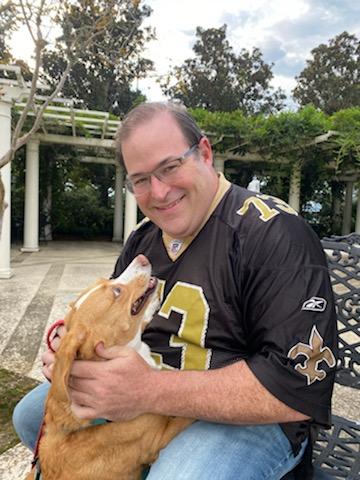
Food, fun, and SMART facilitation. Sounds like Brad’s life in the Big Easy is really rolling nicely on the river.
Learn more about the Take 5 Spotlight series and see others who have been profiled.
PLEASE NOTE BEFORE YOU COMMENT:
SMART Recovery welcomes comments on our blog posts—we enjoy hearing from you! In the interest of maintaining a respectful and safe community atmosphere, we ask that you adhere to the following guidelines when making or responding to others’ comments, regardless of your point of view. Thank you.
- Be kind in tone and intent.
- Be respectful in how you respond to opinions that are different than your own.
- Be brief and limit your comment to a maximum of 500 words.
- Be careful not to mention specific drug names.
- Be succinct in your descriptions, graphic details are not necessary.
- Be focused on the content of the blog post itself.
If you are interested in addiction recovery support, we encourage you to visit the SMART Recovery website.
IMPORTANT NOTE:
If you or someone you love is in great distress and considering self-harm, please call 911 for immediate help, or reach out to 988 Suicide & Crisis Lifeline @ 988, https://988lifeline.org/
We look forward to you joining the conversation!
*SMART Recovery reserves the right to not publish comments we consider outside our guidelines.*
Subscribe To Our Blog
Join our mailing list to receive the latest news and updates from the SMART Recovery Blog.
You have Successfully Subscribed!
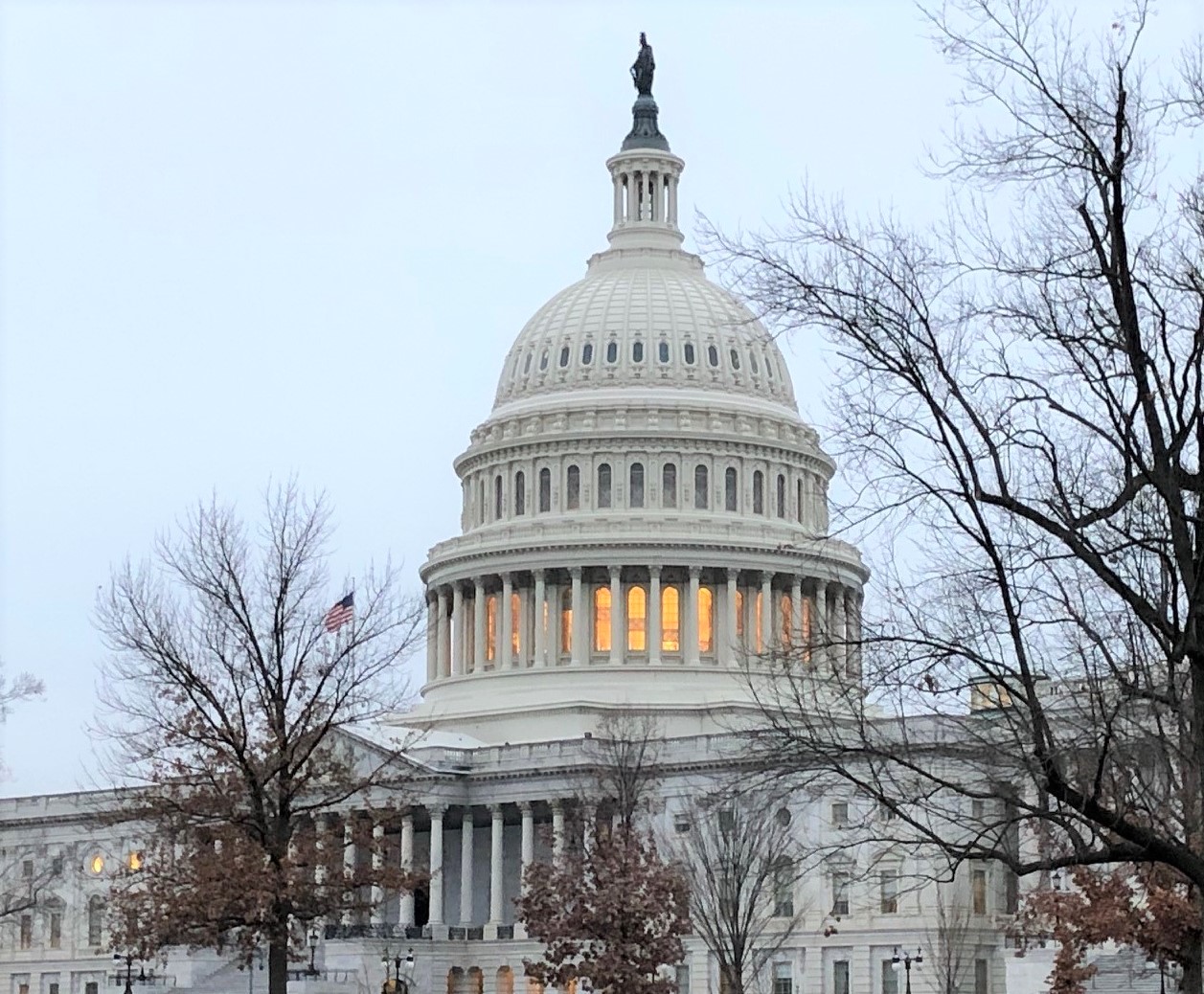
David Koss, JD, is a member of the SMART Recovery Board of Directors and the Director of Government Relations. In his role as director, David monitors what the federal government is doing in terms of addiction and recovery legislation, and advocates for SMART and people with substance use disorders.
David works directly with members of Congress to pass legislation that helps those with substance use disorders receive the care and treatment they need and deserve. For example, the recently passed House Bill HR7666 focuses on mental health funding that directly affects individuals either seeking or already in recovery.
David’s time is also spent on facilitating SMART meetings and coordinating the East Coast Regional Conference. The conference will be held on Saturday, October 22nd in Laurel, Maryland. This year’s theme, Shifting Paradigms, New Opportunities, will focus on new kinds of intervention, treatment, and aftercare – meeting people where they are in their recovery.
Because this is an election year, David urges people to vote and get as involved as possible. He believes it is important to support those in Congress who are fighting to end the addiction epidemic and save lives.
For more information on how you can join the SMART Insiders+ Program, go to: www.smartrecovery.org/insiders
Listen as a Podcast:
Click here to find all of SMART Recovery’s podcasts
PLEASE NOTE BEFORE YOU COMMENT:
SMART Recovery welcomes comments on our blog posts—we enjoy hearing from you! In the interest of maintaining a respectful and safe community atmosphere, we ask that you adhere to the following guidelines when making or responding to others’ comments, regardless of your point of view. Thank you.
- Be kind in tone and intent.
- Be respectful in how you respond to opinions that are different than your own.
- Be brief and limit your comment to a maximum of 500 words.
- Be careful not to mention specific drug names.
- Be succinct in your descriptions, graphic details are not necessary.
- Be focused on the content of the blog post itself.
If you are interested in addiction recovery support, we encourage you to visit the SMART Recovery website.
IMPORTANT NOTE:
If you or someone you love is in great distress and considering self-harm, please call 911 for immediate help, or reach out to 988 Suicide & Crisis Lifeline @ 988, https://988lifeline.org/
We look forward to you joining the conversation!
*SMART Recovery reserves the right to not publish comments we consider outside our guidelines.*
Subscribe To Our Blog
Join our mailing list to receive the latest news and updates from the SMART Recovery Blog.
You have Successfully Subscribed!
New Guides on Medication for Opioid Use Disorder (MOUD) for Treatment Court Professionals and Participants
As we enter the second week of Recovery Month, NADCP is pleased to release newly updated and completely redesigned online guides on medication for opioid use disorder (MOUD) in treatment courts. We encourage treatment courts to incorporate these new guides into your everyday operations, now accessible via convenient HTML webpages and also downloadable as PDFs.
The MOUD guides were created through a partnership between experts at NADCP and addiction medicine specialists with criminal justice expertise from the American Society of Addiction Medicine (ASAM). They reflect up-to-date, evidence-based information to support optimal outcomes for justice-involved individuals living with opioid use disorder.
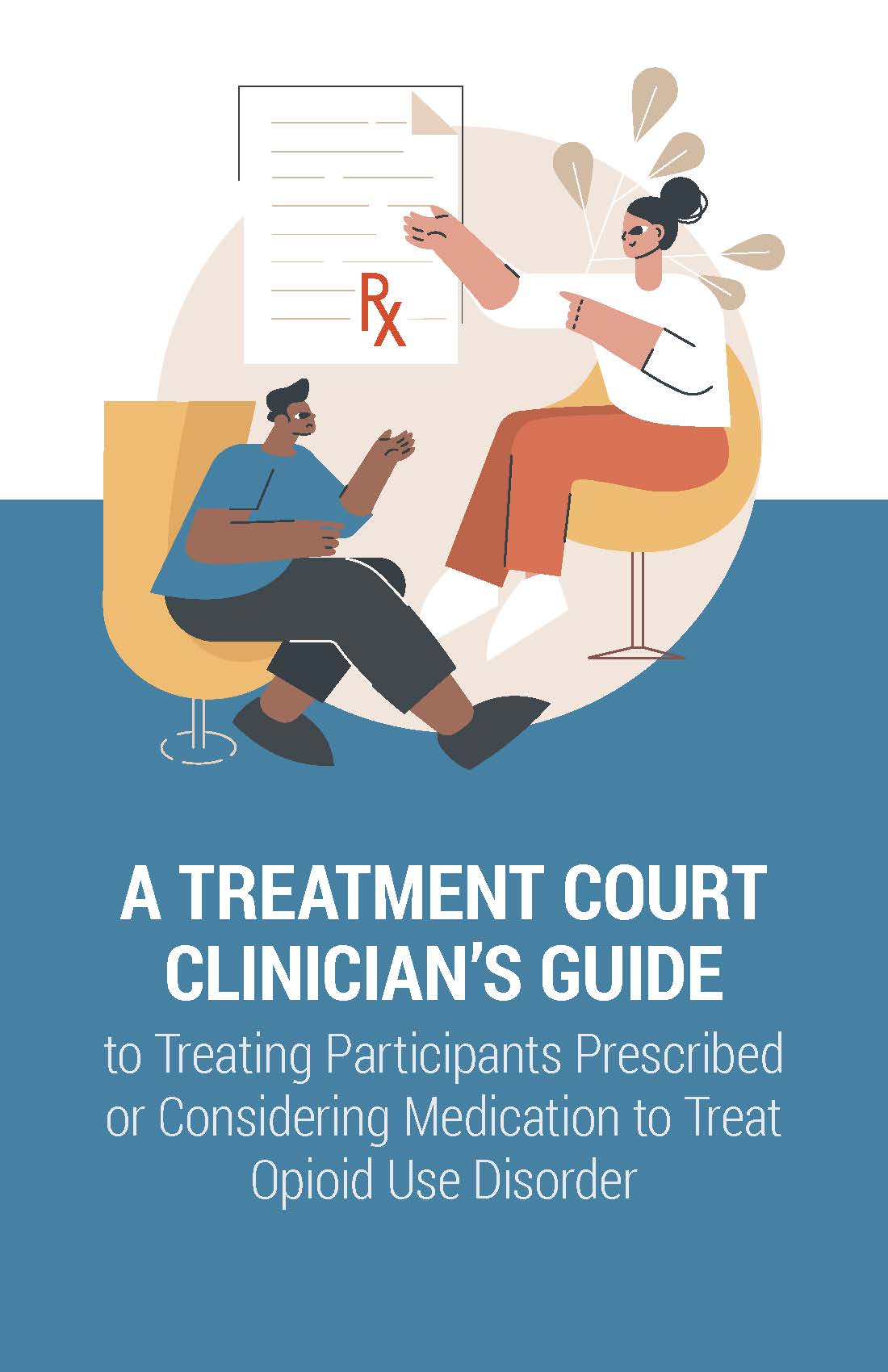
| Clinician Guide |
| This guide is for clinicians working in treatment courts. It describes how clinicians can help participants benefit from MOUD. Readers of this guide will understand best practices around prescribing MOUD, supporting participants considering or using MOUD, and communicating with treatment court team members about best practices around MOUD. |
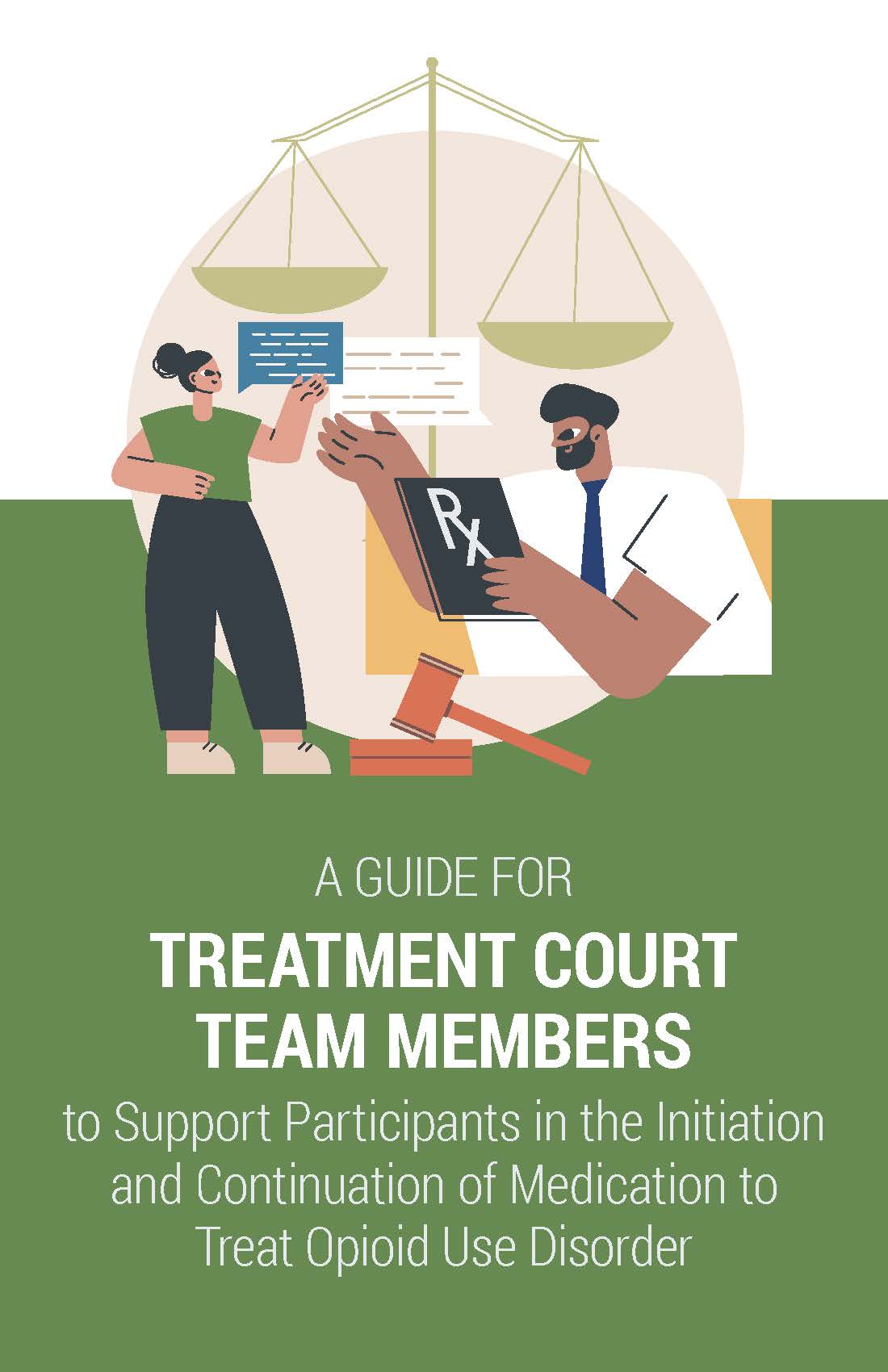
| Team Member Guide |
| This guide is for nonclinical team members working in treatment courts. It describes how team members can help participants benefit from MOUD. Readers of this guide will understand best practices around facilitating access to MOUD, supporting participants considering or using MOUD, and communicating with clinicians and other treatment court team members about MOUD. |
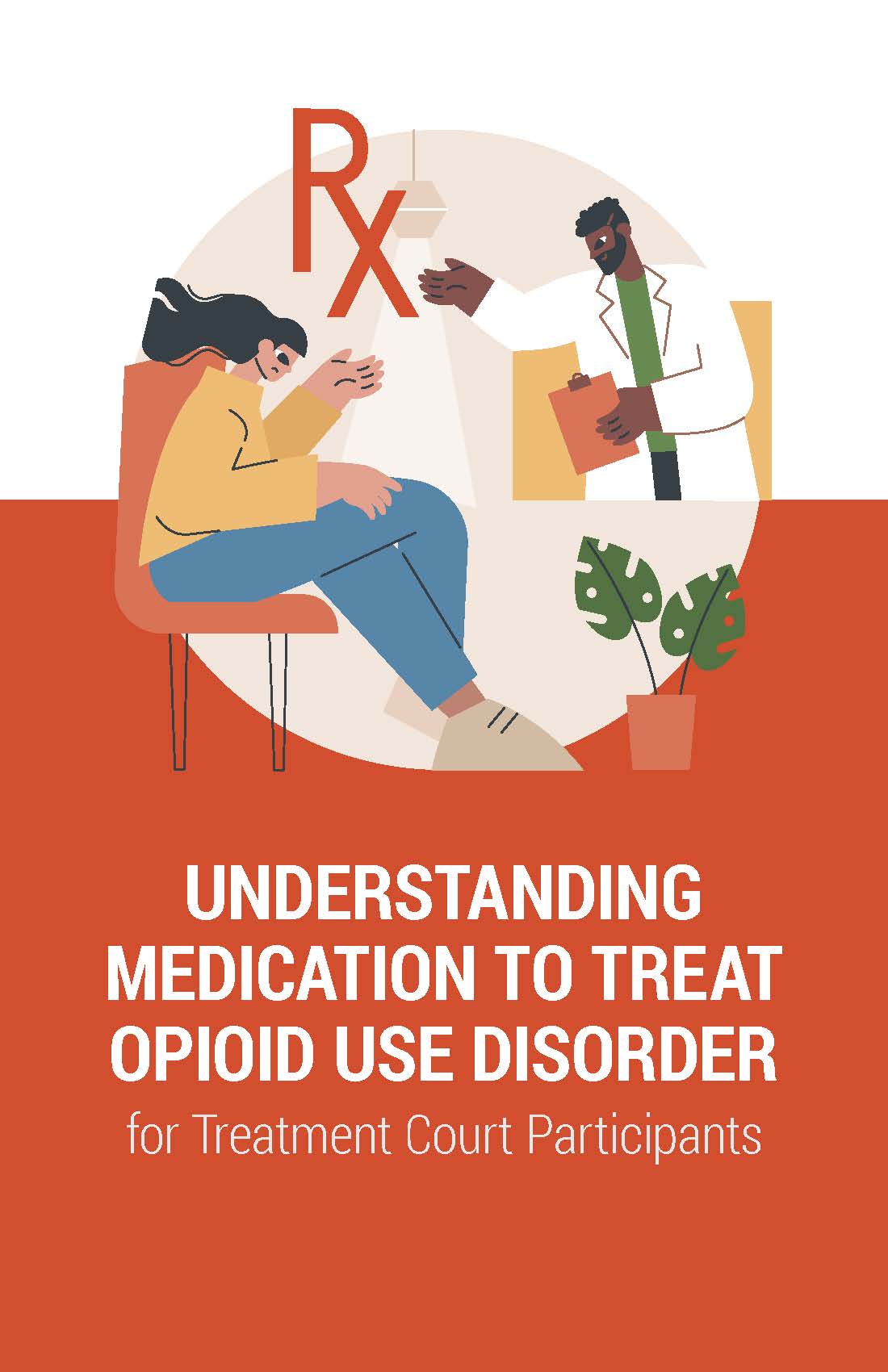
| Participant Guide |
| This guide provides up-to-date, evidence-based information to help treatment court participants understand and benefit from medications as a part of treatment and recovery management. It's designed for any treatment court participant who has decided or is thinking about including medication as part of their recovery plan. It's also perfect for families and other supportive people (e.g., peer mentors, recovery coaches, peer recovery specialists, sponsors, friends, religious/spiritual mentors) so they can help along the road of recovery. |
The post NEW MOUD Guides appeared first on NADCP.org.
